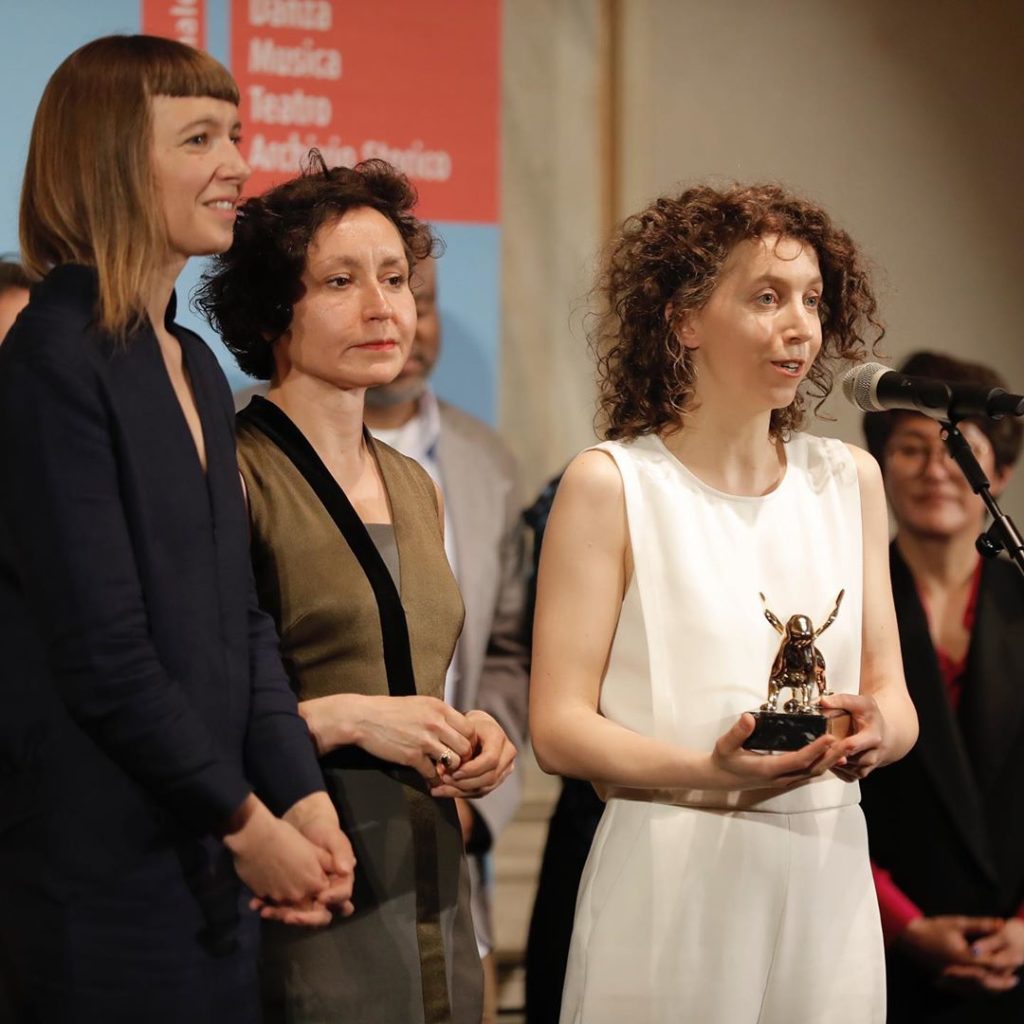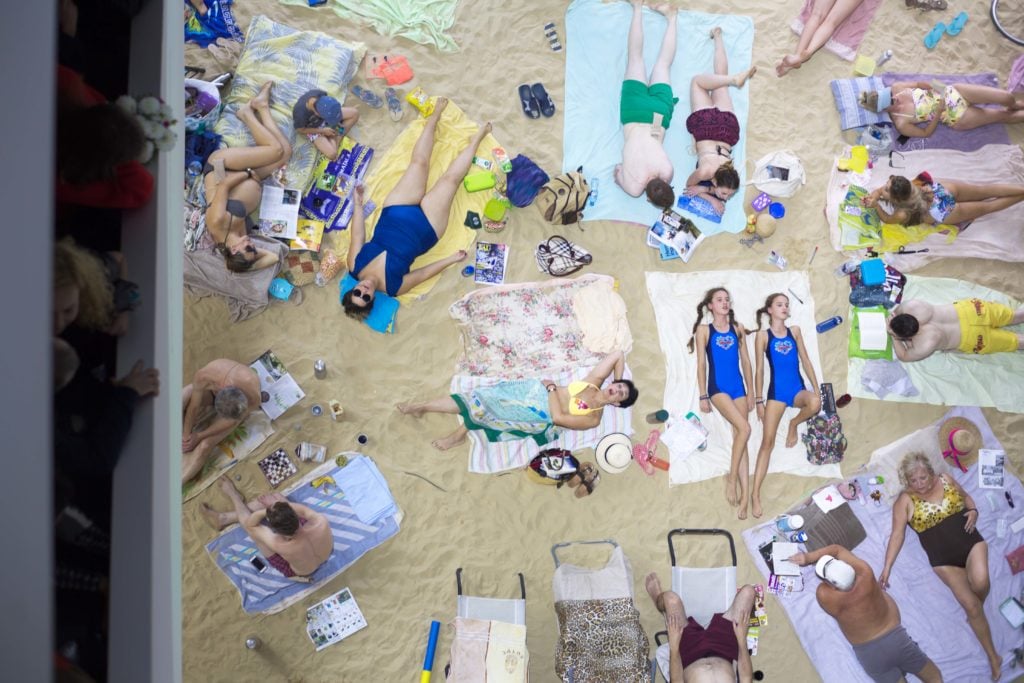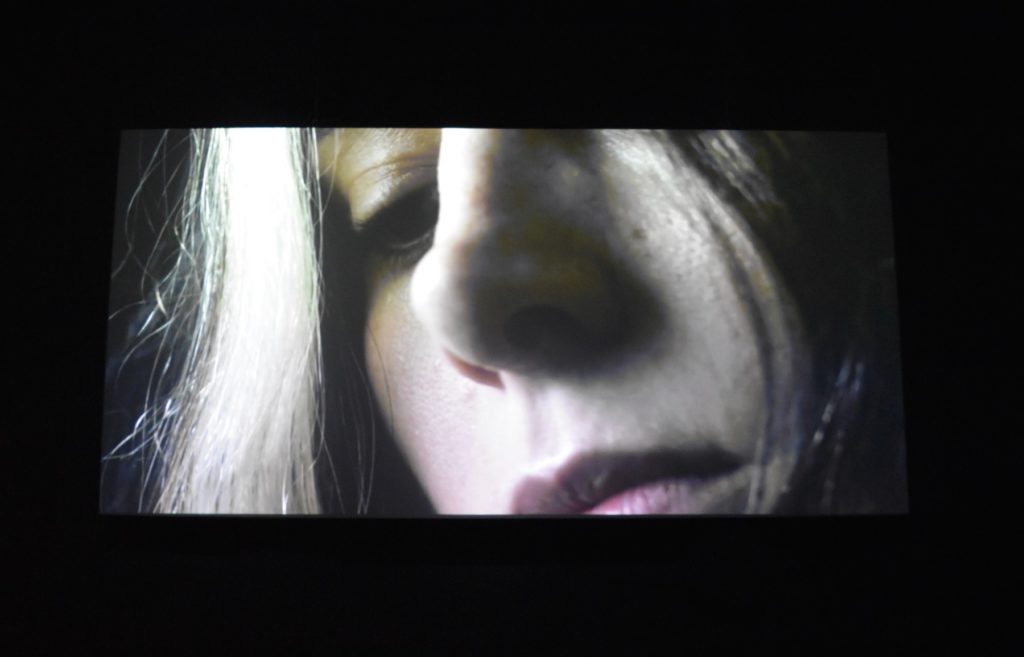Art World
Arthur Jafa and the Lithuanian Pavilion Win the Venice Biennale’s 2019 Golden Lions, Casting a Spotlight on Racism and Climate Change
An international jury has officially named the best in show.

An international jury has officially named the best in show.

The Venice Biennale has awarded the top prizes for this year’s edition to works that explore American race relations and the looming dangers of climate change in subtle, surprising, and affecting ways. The jury awarded the top prize for an international pavilion to Lithuania and the Golden Lion for the best participant in the central international exhibition, “May You Live in Interesting Times,” to American artist Arthur Jafa.
This year’s Silver Lion for a promising young participant in the central show was awarded to 39-year-old Cyprus-born, Berlin-based artist Haris Epaminonda. Her 30-minute video Chimera (2019) floats through shimmering landscapes, close-ups of animals, and lingering shots of cut gems.
Several artists and pavilions also received special mentions. The jury acknowledged two artists for their contributions to the central exhibition: Teresa Margolles for her affecting installations about the plight of women who experience violence in her native Mexico, and Nigerian artist Otobong Nkanga for, as the jury stated, her “exploration across media into the politics of land, body, and time.”
Finally, Belgium received a mention for its pavilion, which featured a surreal installation of motorized puppets cast as characters of patriarchal Europe by Jos de Gruyter and Harald Thys.

Sun & Sea, Lithuania’s contribution to the 2019 Venice Biennale. Photo: Neon Realism.
The biennale’s central exhibition, curated by Ralph Rugoff, carried a unique curatorial conceit. The Hayward Gallery director selected a smaller-than-typical artist list—around 80 individuals and collectives—and included their work in both main venues, rather than creating two entirely different shows. (He called the Arsenale “Proposition A” and the Giardini “Proposition B.”)
Jafa, the Golden Lion winner for the best participant in Rugoff’s show, is known for his gripping videos that incorporate YouTube clips, news broadcasts, and original footage to examine race and culture in America. At the Giardini, he showed his latest film, The White Album (2018), an exploration of whiteness. At the Arsenale, he showed a very different side of his work: monumental sculptures made of tires and chains that recalled gallows.
As he took to the stage in the ceremony’s grand ballroom to claim his lion, Jafa, holding back tears, thanked his parents, his brothers, and fellow artist and friend Kahlil Joseph, whose work is also on view in the central exhibition.
Lithuania was selected for the performance Sun & Sea (Marina), an opera about the dangers of climate change and a biting critique of leisure. The project is the work of theater director Rugilė Barzdžiukaitė, playwright Vaiva Grainytė, and composer Lina Lapelytė. It first debuted at Vilnius’s National Gallery of Arts in 2017 in Lithuanian and was adapted into English for the biennale.
“In this piece, we draw a line between the fragility of the human body and the fragility of the earth,” Barzdžiukaitė told the crowd. “We are very happy that this piece that was so fragile in nature was recognized in such a way.”
The international jury of curators tasked with selecting the winners of this year’s biennale—and, in the process, helping to shape the direction of contemporary art for years to come—is composed of jury president Stephanie Rosenthal, the director of the Gropius Bau art center in Berlin; Defne Ayas, curator at large for the V-A-C foundation in Moscow; Cristiana Collu, director of the Galleria Nazionale d’Arte Moderna e Contemporanea in Rome; Sunjung Kim, president of the Gwangju Biennale Foundation; and Hamza Walker, director of the LA nonprofit LAXART.

Arthur Jafa, The White Album (2018). Image courtesy Ben Davis.
As previously announced, the jury awarded the coveted Golden Lion for Lifetime Achievement to American-born, Berlin-based artist Jimmie Durham. Although Durham is not a recognized member of the Cherokee tribe—which has recently been a source of controversy—he self-identifies as a Cherokee, and much of his artistic practice deals with issues of colonialism and Native American identity.
In the Arsenale section of Rugoff’s exhibition, Durham presented a series of sculptures dedicated to the largest mammals in Europe—many of which are on the verge of extinction—made out of furniture, industrial materials, and used clothes. In the Giardini, he showed a slab of marble accompanied by a detailed description of exactly how the material traveled from a quarry in India to his studio in Berlin to the exhibition in Venice.
In lieu of a speech to accept his Golden Lion, the 78-year-old artist approached the microphone and sang a brief song.
Additional reporting by Naomi Rea